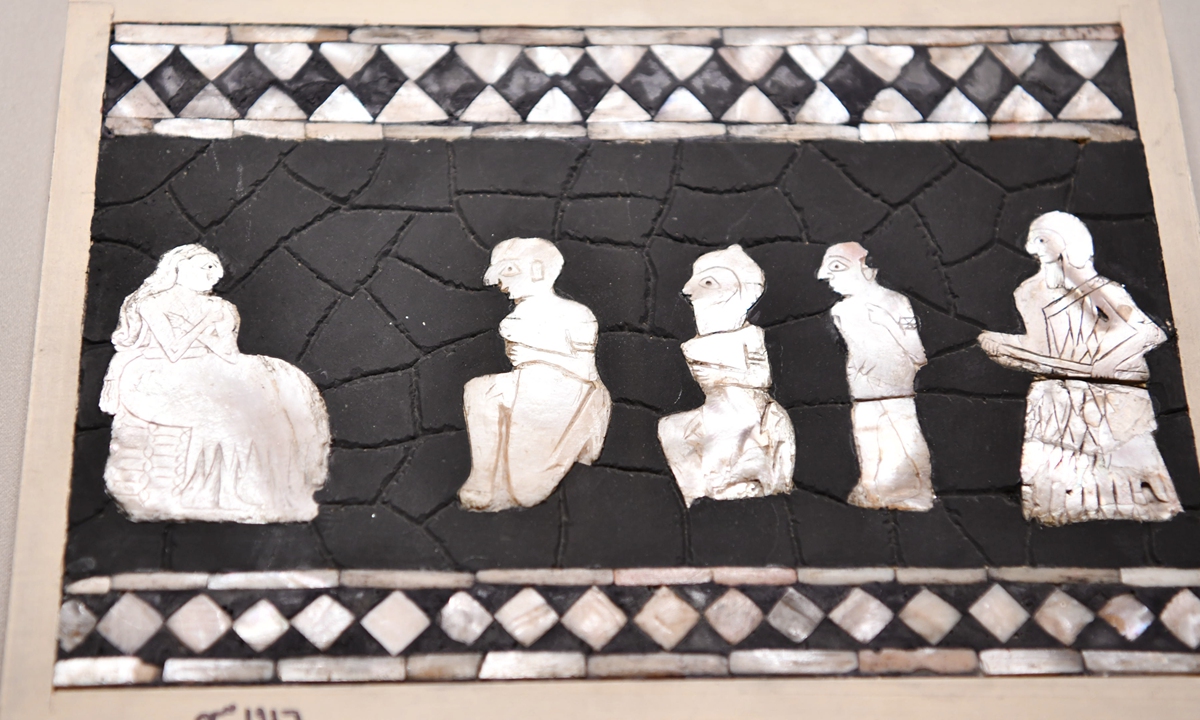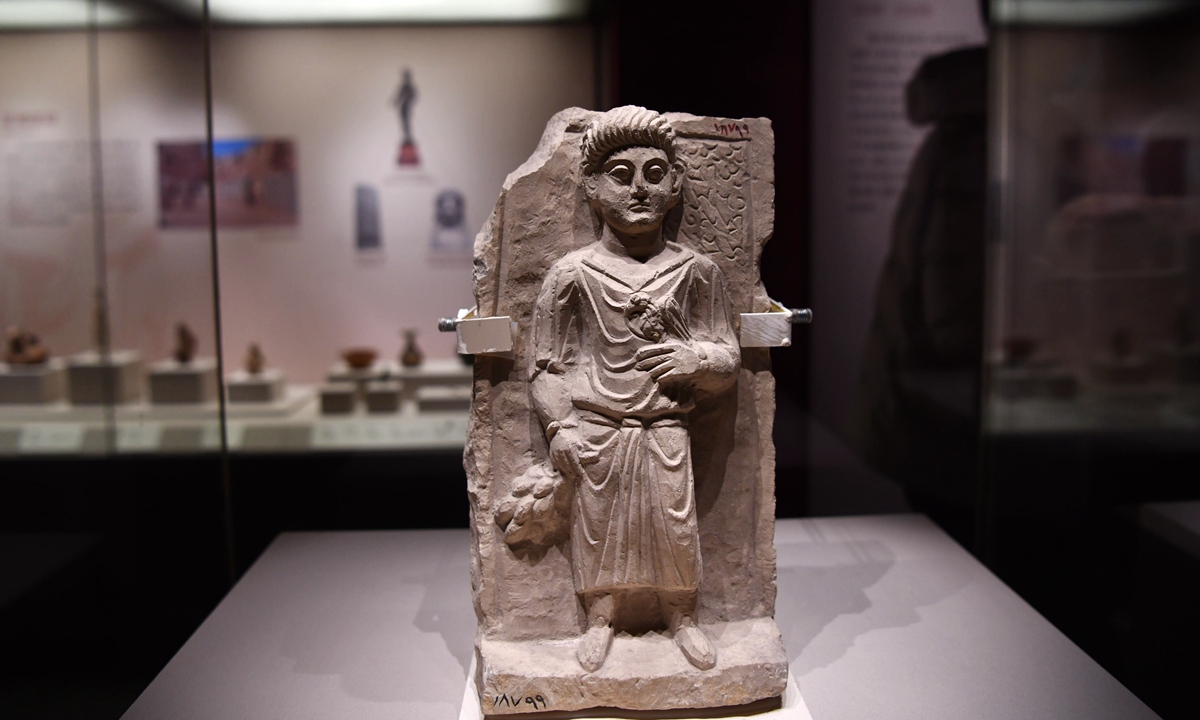
An artwork made from shells at the Syria exhibition Photo: IC

A statue on display at an ancient Syria exhibition in Chengdu, Sichuan Province, on December 30, 2021 Photos: IC
China and Syria signed a joint agreement at the National Library of China in Beijing on Monday that will see the two countries increase cooperation in cultural fields such as archaeological research and exhibitions with the end goal of protecting Asian culture.
The joint initiative to protect Asian civilization was proposed by Chinese President Xi Jinping in a keynote speech at the Conference on Dialogue of Asian Civilization in Beijing in May 2019.
The cooperation agreement is the first official bilateral document signed by the cultural heritage administrations in China and Syria and will be a new starting point for the two countries' cultural conservation efforts, Li Qun, director of the National Cultural Heritage Administration, said at the signing ceremony.
"Many Asian archaeological artifacts made by our forefathers are scattered in museums outside their country of origin, where most of Asian history was written with non-Asian pens. Our continent has longwaited for such creative initiatives to emerge. Through this initiative, we will know and write our own history with our own hands, and cooperate in excavating the traces of our civilizations to know more of the bond our forefathers built throughout the ages," Muhammad Hassanein Khaddam, the Syrian ambassador to China, said at the ceremony.
China has been cooperating with many Asian countries on a diverse range of projects, including joint archaeological excavations and restoration of ancient buildings.
According to archeologists, the major reasons that other Asian countries are willing to coordinate with China are a trust in Chinese technology and financial support of cultural heritage conservation, which have developed quickly in China in recent years.
Working togetherAccording to the agreement, China and Syria will seek more exchanges and cooperation between cultural heritage conservators and management professionals in the two nations, including exchange visits, joint training programs and information sharing.
Other key areas of cooperation will include archaeological excavations, exhibitions and academic research of museum collections, restoration of monuments and ruin sites, conservation of underwater cultural heritage and sharing experiences in the nomination, management and monitoring of World Heritage Sites.
Cracking down on the illicit trafficking of cultural property and crimes related to cultural relics is also one of the focuses of the agreement.
Prior to the agreement, the two countries had launched several cultural events concerning precious relics and national history to promote cultural exchanges.
For instance,
Encounter Mesopotamia: An Exhibition of Antiquities from Ancient Syria, running at the National Museum of Classic Books in Beijing until October 8, is displaying 196 relics from nine museums, including the National Museum of Damascus and the National Museum of Aleppo.
Relics on display include statues of worshippers, delicate accessories made of lapis lazuli and a carved stone tablet from the museum of the Xinjiang Uygur Autonomous Region, which shows the cultural resemblances and differences between China and Syria.
Besides Syria, China has carried out 28 joint archaeological projects with 15 Asian countries, involving many important sites along the Silk Road and the Maritime Silk Road, that have further summarized the historical context, splendid achievements and contributions of Chinese civilization, and Asian civilization in general, to world civilization and provided strong support for further revealing the origin and development of Asian civilization, according to Li.
Since 1998, when China launched its first cooperative restoration project at the Chau Say Tevoda temple in Angkor, Cambodia, the footprint of Chinese cultural experts in Asia has extended to 11 historical sites in six Asian countries, including Uzbekistan, Nepal, Myanmar, Mongolia and Kyrgyzstan.
Warm receptionIn an online speech at the signing ceremony, Syrian Minister of Culture Loubana Mouchaweh noted that the country has endured the dark shadow of war over the past decade and its cultural relics have also suffered much destruction.
She noted that "safeguarding [Syria's cultural heritage] is not merely the responsibility of the people of Syria, but also relies on everyone. We need a concerted effort for mankind to safeguard the great heritage on the Silk Road together with us."
Representatives from cultural institutions in other Asian countries such as Iran and Vietnam also expressed their support for the initiative on Asian civilization proposed by China.
Liu Zheng, a member of the China Cultural Relics Academy, told the Global Times that the proactive and positive attitude concerning cooperation with China is because these counties have seen the development and advantages of Chinese archaeological technology and China's strong support for cultural heritage conservation.
"It is obvious to all that China has capabilities and experience in many archaeological fields. We developed 3D scanning and modeling technology to restore ancient ruins such as the Longmen Grottoes and Mogao Caves, and the final results have convinced the world," he added.
Some Asian countries including Syria and Cambodia also possess large-scale ruin sites and large amounts of cultural relics that are waiting to be restored and protected, so they need China's experience and support, Liu noted.





